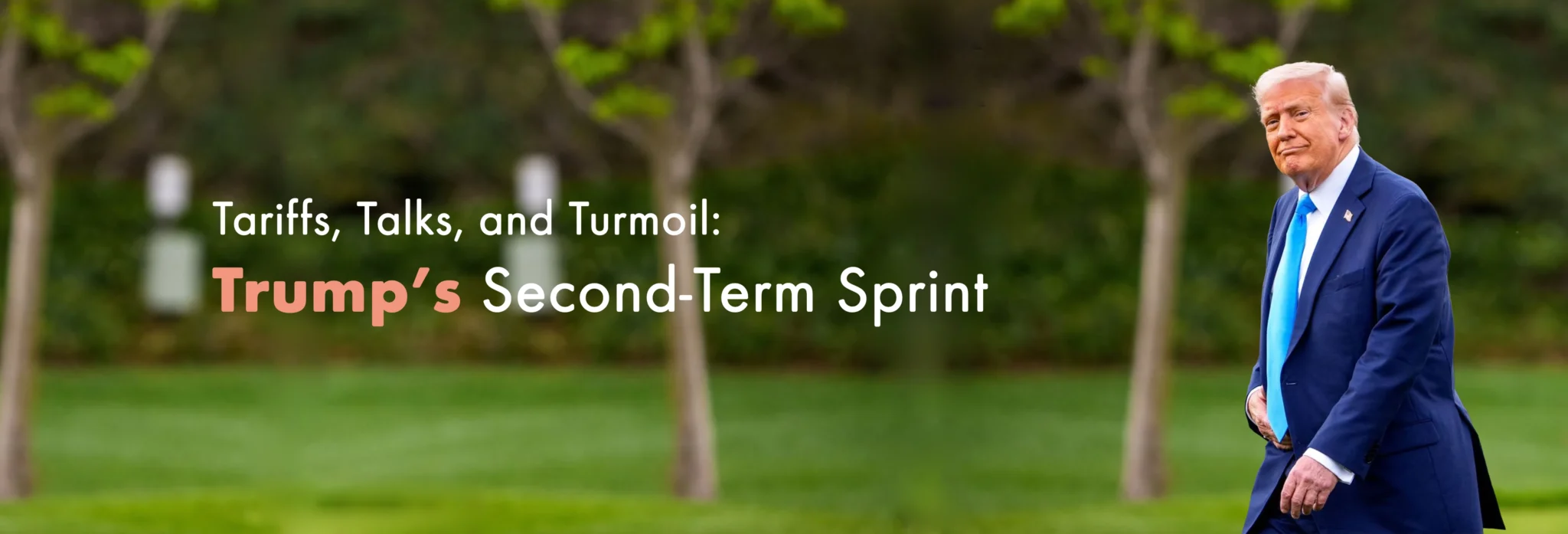

By: Ali Pourbehzadi
Donald Trump’s first 100 days in his second term as U.S. President, beginning January 20, 2025, have been marked by bold, polarizing, and often chaotic policy shifts. His “America First” agenda has driven sweeping changes in domestic and foreign policy, with profound implications for the global economy and international relations. From aggressive tariffs sparking trade wars to mass deportations and high-stakes diplomacy in Iran and Ukraine, Trump’s rapid moves have reshaped America’s global role while deepening domestic divisions. His unorthodox leadership signals a presidency of disruption, controversy, and redefined power.
Negative Aspects of Trump’s Decisions
1. Global Economic Disruption from Tariffs
Trump’s aggressive tariff policies, including a 145% tariff on Chinese goods, a 10-20% baseline on other imports, and specific tariffs on Canada and Mexico, have triggered a global trade war, destabilizing markets and raising recession risks. These tariffs, intended to protect U.S. industries, have had profound negative effects:
- Market Volatility and Economic Uncertainty: The S&P 500 and U.S. Treasury markets experienced sharp declines following the April 2025 “Liberation Day” tariffs. Economists warn that the unpredictability of Trump’s policy shifts—imposing and occasionally suspending tariffs—has made long-term business planning nearly impossible, prompting companies to reduce hiring and investment. Surveys indicate a growing risk of recession, with consumer confidence plummeting and 72% of Americans in an ABC News/Washington Post/Ipsos poll believing Trump’s policies could cause a short-term economic downturn.
- Increased Consumer Costs: Tariffs have raised prices for imported goods, costing U.S. households an estimated $3,800 annually. This contradicts Trump’s campaign promise to lower prices, contributing to his low approval ratings (39% per ABC News/Washington Post/Ipsos poll).
- Retaliation from Trading Partners: China responded with tariffs on U.S. products, while Canada and Mexico faced economic pressure, with Canada electing a liberal candidate in response to Trump’s tariff threats and territorial rhetoric about making Canada the “51st state.” These retaliatory measures have weakened U.S. exports and strained alliances.
- Global Supply Chain Shocks: The tariffs have disrupted supply chains, particularly in industries reliant on Chinese components, leading to shortages and higher production costs. The World Trade Organization and economists predict a slowdown in global economic output, with developing nations facing disproportionate impacts.
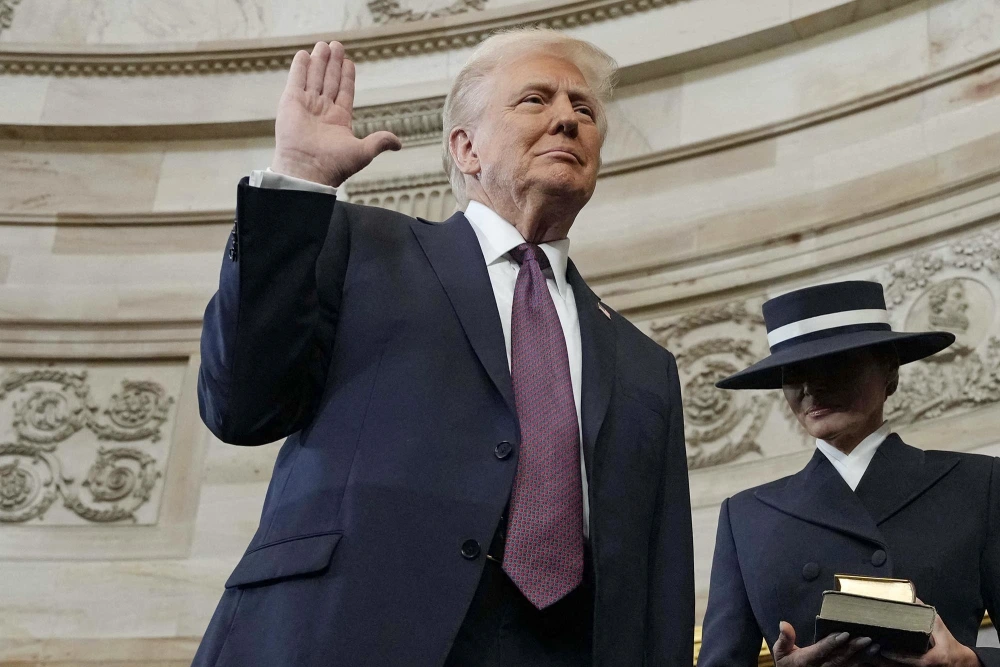
2. Immigration Policies and Human Rights Concerns
Trump’s immigration agenda, centered on mass deportations and strict enforcement, has drawn widespread criticism for its humanitarian and economic consequences:
- Mass Deportations and Due Process Violations: Trump’s administration has deported thousands of migrants, including many without criminal records, to countries like El Salvador, where they face harsh prison conditions without due process. This has been condemned as a violation of human rights, with images of detained migrants evoking comparisons to “20th-century concentration camps.”
- Economic Impact: Deportations have disrupted industries reliant on immigrant labor, such as agriculture and construction, leading to labor shortages and higher costs. The removal of over 100,000 federal workers, many tied to immigration enforcement or civil service purges, has further strained government operations.
- International Backlash: The outsourcing of immigration detention to El Salvador and harsh treatment of noncitizens have damaged U.S. credibility, with allies like France warning of a “crumbling American shield” and a shift toward authoritarianism.

3. Foreign Policy Chaos and Strained Alliances
Trump’s foreign policy has been described as a “move fast and break things” approach, alienating traditional allies and creating uncertainty:
- NATO and European Relations: Trump’s criticism of NATO as “freeloading” and his threats to reduce U.S. support have weakened transatlantic security. European nations are boosting their own defense industries and debating reduced reliance on U.S. weapons, while populist parties in Europe have lost support due to Trump’s toxic trade policies.
- Ukraine Aid Cutoff: The abrupt halt of military and intelligence aid to Ukraine in March 2025, following a contentious Oval Office meeting with President Volodymyr Zelensky, has been criticized as abandoning an ally. This move, coupled with Trump’s pressure on Ukraine to cede territory to Russia, has emboldened Russia and raised fears of further aggression against Moldova or the Baltic states.
- Global Perception of Unreliability: Trump’s proposals to annex Greenland, retake the Panama Canal, and turn Gaza into a resort town have been seen as erratic, undermining U.S. credibility. Allies like South Korea are considering nuclear armament, signaling a loss of trust in U.S. protection.
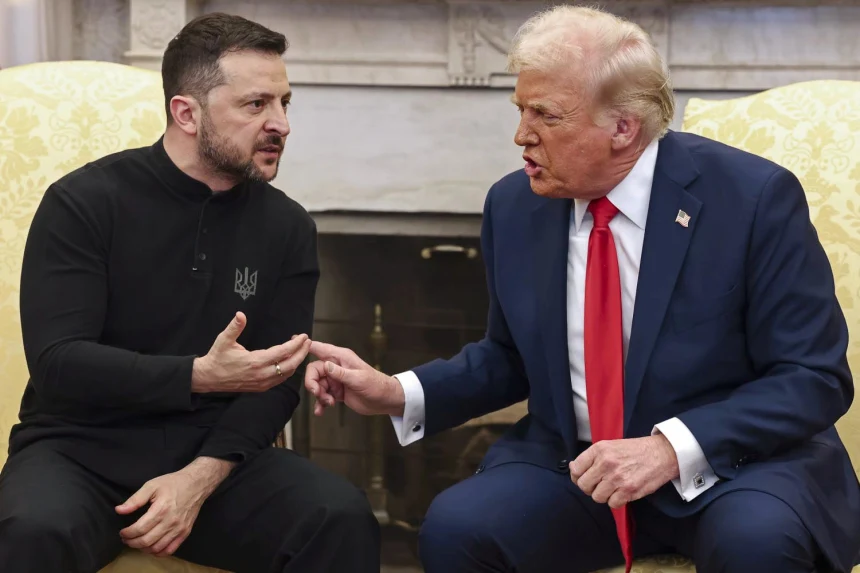
4. Domestic Governance and Authoritarian Concerns
Trump’s domestic actions have raised alarms about democratic backsliding:
- Executive Overreach: With over 135 executive orders, Trump has bypassed Congress more than any modern president in their first 100 days, targeting agencies like USAID (shuttered abruptly) and firing inspectors general. This has led to accusations of authoritarianism and warnings of a constitutional crisis.
- Justice Department Weaponization: Investigations into political enemies and the pardoning of January 6 rioters, including those convicted of violent acts, have polarized the nation and eroded trust in institutions.
- Economic Mismanagement: The chaotic implementation of Project 2025, a right-wing policy blueprint, has been undermined by cabinet infighting and leaks, particularly at the Pentagon, which is reportedly in disarray. This has hampered effective governance and economic stability.
Positive and Uplifting Developments
1. Iran Nuclear Negotiations
Trump’s push for a new nuclear deal with Iran, after withdrawing from the Joint Comprehensive Plan of Action (JCPOA) in 2018, has shown promising early progress, offering a potential path to de-escalation in the Middle East:
- Diplomatic Engagement: Trump initiated talks by sending a letter to the Iranian leadership in March 2025, followed by indirect negotiations mediated by Oman. Four hours of talks in Rome on April 12, 2025, led by Trump’s envoy Steve Witkoff, made significant progress, with further technical discussions scheduled in Geneva. Iran’s Foreign Minister Abbas Araghchi expressed cautious optimism, and Supreme Leader Ali Khamenei approved a second round of talks, signaling openness to dialogue.
- Potential for a Deal: The talks aim to prevent Iran from developing nuclear weapons, with proposals including Iran diluting its 60% enriched uranium stockpile or capping enrichment at lower levels in exchange for sanctions relief. Russia’s potential role as a destination for Iran’s uranium stockpile and arbiter of deal breaches adds a creative diplomatic dimension. A limited deal could buy time, while a comprehensive agreement, though unlikely within Trump’s 60-day timeline, could stabilize the region.
- Regional Implications: Successful negotiations could reduce tensions with Israel, which has conducted strikes on Iran, and strengthen ties with Saudi Arabia, which signaled solidarity with Iran against U.S.-Israeli attacks. This aligns with Trump’s goal of expanding the Abraham Accords.
- Challenges Remain: Iran’s insistence on a U.S. congressional treaty or financial penalties for withdrawal, coupled with distrust from Trump’s 2018 exit, complicates negotiations. However, the willingness of Iran’s moderate President Masoud Pezeshkian to engage, despite Supreme Leader Khamenei’s reservations, suggests a window for progress.
2. Russia-Ukraine Ceasefire Efforts
Trump’s attempts to broker a ceasefire in the Russia-Ukraine war, though not fully successful, represent a significant diplomatic push to end Europe’s largest conflict since World War II:
- Negotiation Efforts: Trump has prioritized ending the war, holding multiple rounds of talks with Russian and Ukrainian delegations in Saudi Arabia and elsewhere. A limited 30-day ceasefire on energy infrastructure strikes was agreed upon in March 2025, supported by Ukraine but not fully reciprocated by Russia. Trump’s direct calls with Vladimir Putin and meetings with Volodymyr Zelensky in Rome have kept negotiations alive, despite setbacks.
- Potential for Peace: Trump’s “escalate to de-escalate” strategy, including threats of 50% tariffs on countries buying Russian oil and secondary sanctions, has pressured Russia to consider a deal. Proposals like the “Black Sea Initiative” to secure grain exports and a UN-run government in Ukraine for elections show creative approaches to peace. While no permanent ceasefire has been achieved, the White House aims for talks in Jeddah to build on the limited agreement.
- Humanitarian Impact: A ceasefire, even temporary, could reduce civilian casualties, with over 100,000 Russian and 43,000 Ukrainian military deaths reported by early 2025. Trump’s push for peace aligns with his campaign promise to resolve international crises quickly, offering hope for de-escalation.
- Challenges and Criticism: Trump’s pressure on Ukraine to cede territory, including Crimea, and his public criticism of Zelensky have strained U.S.-Ukraine relations. Russia’s continued bombing, including 139 Iran-designed drones in one night, undermines trust in Putin’s commitment. Critics argue Trump’s alignment with Russia risks rewarding aggression, but his persistence in talks keeps the door open for progress.
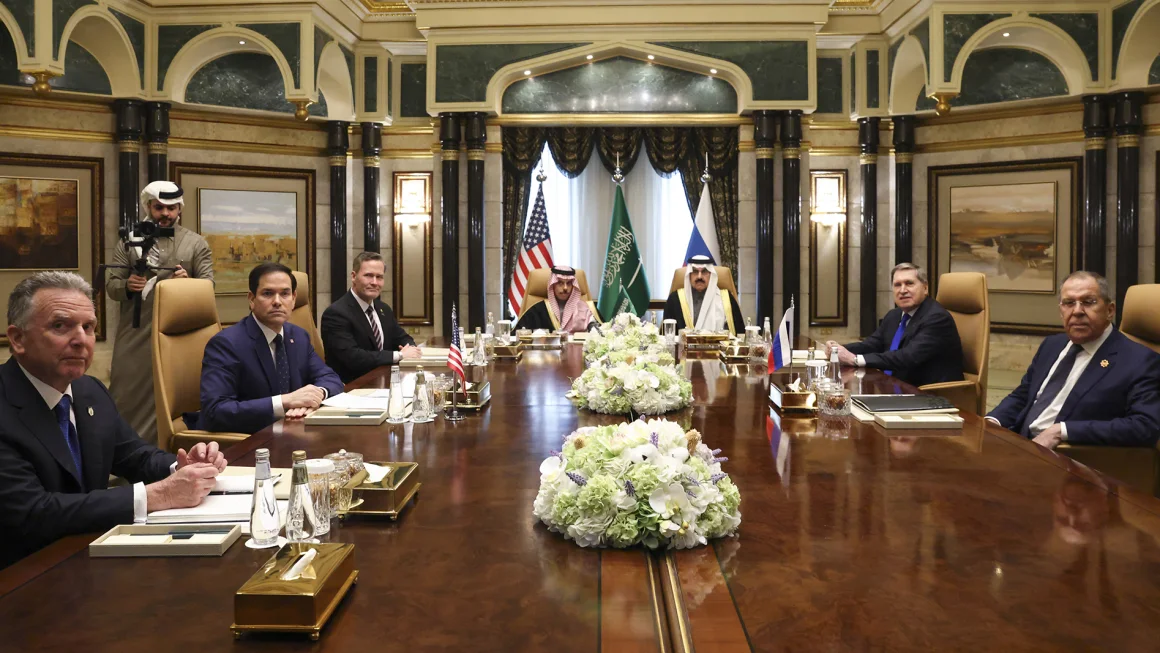
3. Other Uplifting Initiatives
- Gaza Ceasefire Attempt: Trump brokered a ceasefire in Gaza, though it collapsed due to Israel’s resumption of attacks. The initial success demonstrated his ability to mediate complex conflicts, and ongoing efforts to pressure Hamas could lead to renewed talks.
- Economic Investments: Despite tariff-related losses, Trump’s policies have spurred $1 trillion in domestic investments, particularly in energy and steel, creating jobs in some sectors. This aligns with his promise to revitalize American industry, though gains are offset by trade war costs.
- NATO Burden-Sharing: Trump’s pressure on NATO allies to increase defense spending has prompted Europe to contribute more to its security, aligning with his goal of reducing U.S. financial burdens. This could strengthen the alliance long-term, despite current tensions.
Critical Evaluation
Trump’s first 100 days reflect a high-risk, high-reward approach. His tariff-driven trade war and immigration policies have caused significant economic and humanitarian damage, alienating allies and raising authoritarian concerns. The global economy faces recession risks, and U.S. credibility has suffered due to erratic foreign policy. However, his diplomatic efforts in Iran and Ukraine show a commitment to resolving major global challenges, with tangible progress in nuclear talks and ceasefire negotiations, though both remain fragile.
The negative impacts—economic disruption, strained alliances, and human rights concerns—are immediate and measurable, with long-term consequences for U.S. leadership. The positive developments, while promising, are incomplete and face significant hurdles, such as Iran’s distrust and Russia’s intransigence. Trump’s transactional, “escalate to de-escalate” strategy, rooted in his Art of the Deal philosophy, has yielded mixed results, with chaos often overshadowing progress.
If you are interested in Trump’s background, check out the link below to learn more:
The Art of the Comeback: Donald Trump’s Rollercoaster Ride in Business and Politics



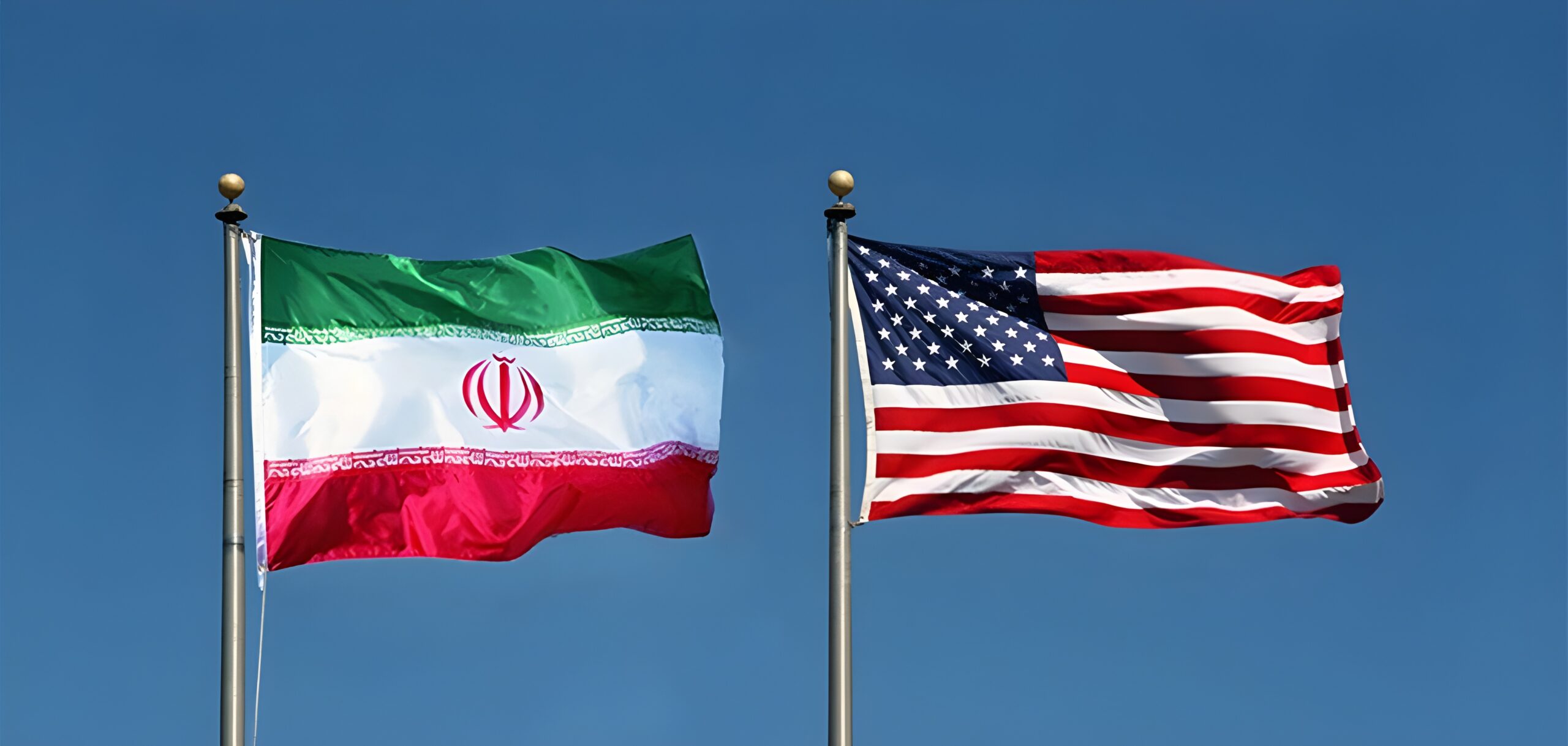


Trump has been making the world feel a rollercoaster of emotions. Cant wait to see how it progressess….